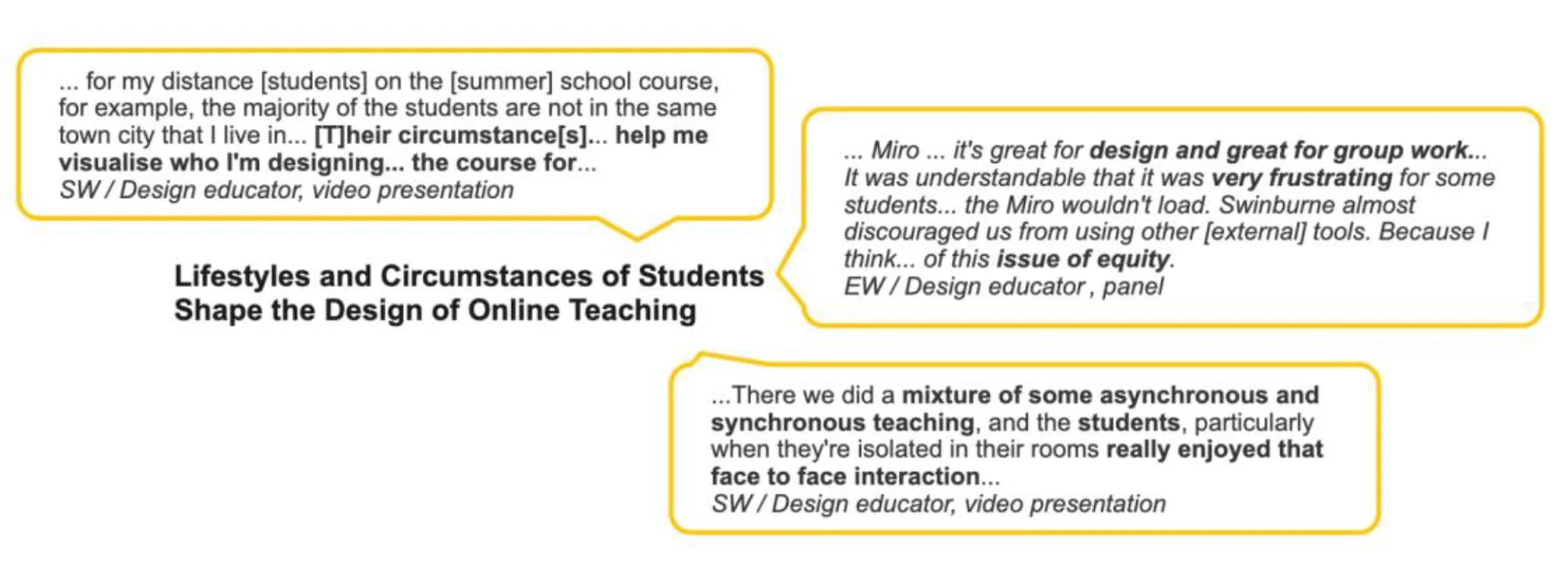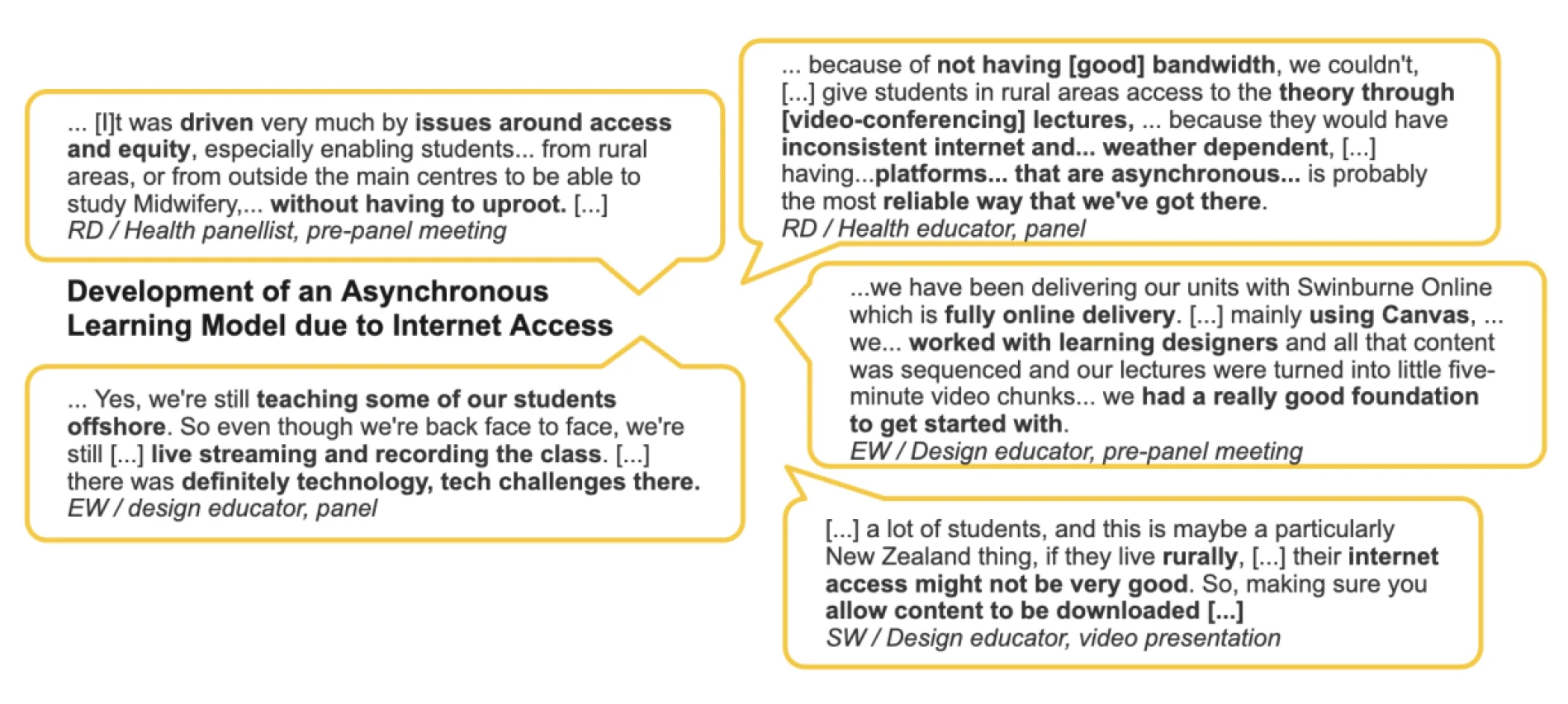Design and health educator insights on future pedagogies for online teaching
A panel of design and health educators came together to reflect on their experiences of online teaching. Seven insights and four takeaways emerged from their discussion, on advancing access, equity, and inclusion in relationship to contexts, experiences, approaches and technologies that inform their online teaching practices. The panel took place at the 2022 Digitally Engaged Learning Conference, with a conversation paper published later in the proceedings of Learn X Design 2023.
The health educators (and users of OB3) have more than a decade of experience in online teaching, allowing them to develop and refine their online courses over an extended period of time. In contrast, the design educators had some experience in online teaching and the pandemic provided opportunities to increase it. Similarities and differences in online teaching between the two disciplines were highlighted.

Figure 1: Co-authors clock-wise: Emily Wright, Gloria Gomez (GG), Mary Kensington (MK), Rea Daellenbach (RD), Areli Avendaño-Franco (AAF), Sarah Wakes (SW), and Lorna Davis (not in picture)


